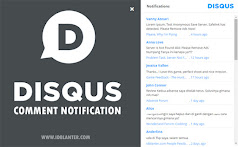Posted by Allan Brown, Director, Recognition & HR SystemsWe work hard to attract and retain the world's best talent in a number of ways, and a part of that is offering competitive compensation packages. We offer standard things such as competitive salary, cash incentives, restricted stock units and stock options. But we also aim to be innovative. So today we're announcing a new compensation program called Transferable Stock Options (TSOs).
As with most employee stock option programs, Google's program to date has allowed employees to do two things with their options. Upon vesting they can (1) hold them or (2) exercise them and then hold or sell the stock. With the new TSO program, employees will have an additional alternative: they can transfer (sell) their options to a financial institution through a competitive bidding process. The ability to sell options is not a novel concept -- today people can buy and sell options to purchase GOOG stock and the stock of many other companies on the public markets. What is novel is that we are extending this ability to trade options to employee stock options.
Typically, employees get value from stock options by exercising them after vesting, and then selling the stock they get from the exercise at a higher price, provided the company's stock price has appreciated since the time of grant. With the TSO program, employees will also be able to sell vested options to the highest-bidding financial institution, which may be willing to pay a premium above the difference between the exercise price and the market price for Google stock (even when the exercise price is higher than the market price). The premium paid is for the time value of the options. More on that and how institutions would do this, and why, is
here.
Employees will still have the choice of simply exercising and then holding or selling the stock too. But if they choose to sell the options, they can use a simple online tool that will show them the best price a participating financial institution is willing to pay for their vested options in real time. With that tool, they'll be able to sell their vested options to the highest bidder.
In addition to increasing the value of every option employees receive, the TSO program makes the value of their options much more tangible. In the past, employees typically valued Google stock options based simply on the difference between their option exercise price and the current market stock price (called the intrinsic value). Since Google grants options with exercise prices that are at, or above, the market price of Google stock, many employees do not value options on the day they are granted. By showing employees what financial institutions are willing to pay for their options, it is made clear that the value of their options is greater than just the intrinsic value.
We aren't offering this program for everyone or for all stock options.
Google Executive Management Group (EMG) may not participate, and only employee stock options granted after our IPO are eligible. We should also note that we've discussed this program with the SEC and we'll ensure it complies with applicable securities laws.
We've chosen Morgan Stanley to manage the auction of these TSOs between our employees and the multiple bidders, and we are working with multiple financial institutions to participate as bidders in the auction. We expect to have this program up and running in the second quarter of 2007.
If you're wondering how this would work for employees, here is
an example scenario. There's more about the
related accounting here. And for answers to other questions, we've put together
an extensive Q and A.
(You'll notice some legal language below, and at the bottom of all the related information we link to. We're including that because we will file a registration statement with the SEC as a requirement of offering this program, and we want to help you find all of the information related to this registration statement.)
Google may file a registration statement (including a prospectus) with the SEC for the offering to which this communication relates. Before you invest, you should read the prospectus in that registration statement and other documents Google has filed with the SEC for more complete information about Google and this offering. You may get these documents for free by visiting EDGAR on the SEC Web site at www.sec.gov. Alternatively, Google will arrange to send you the prospectus after filing if you request it by calling toll-free 1-866-468-4664 or sending an e-mail to
investors@google.com.








.jpg)

